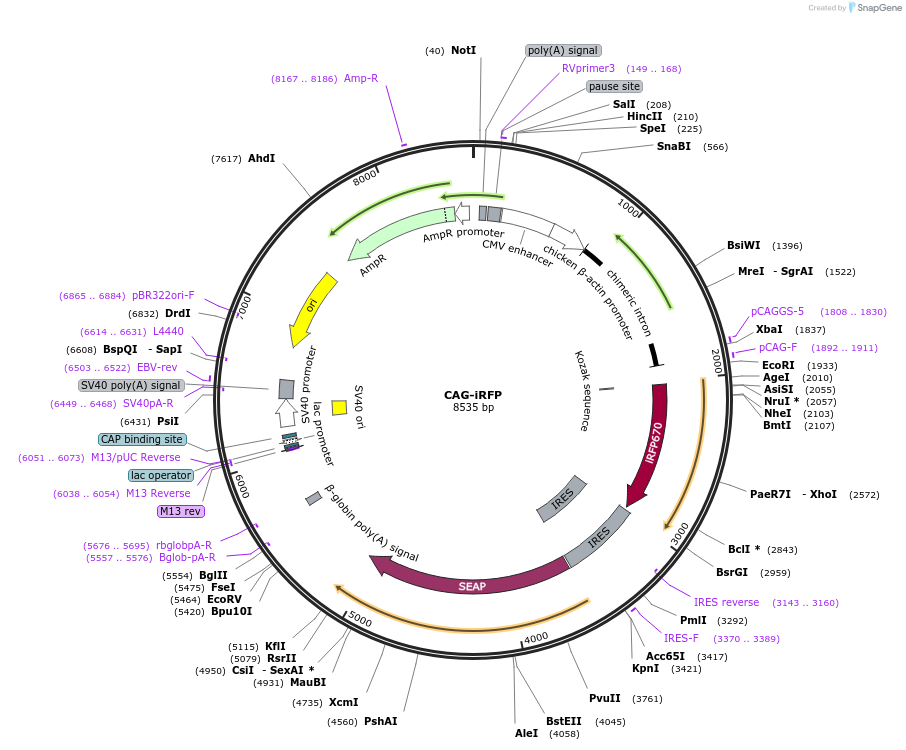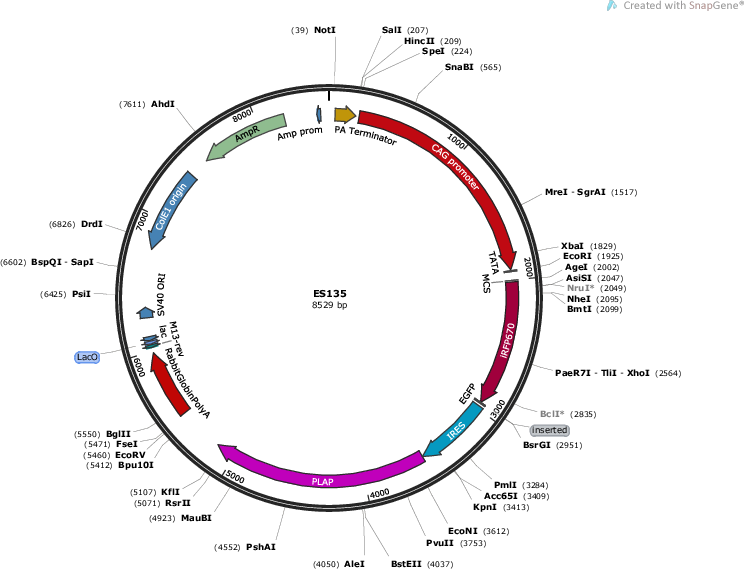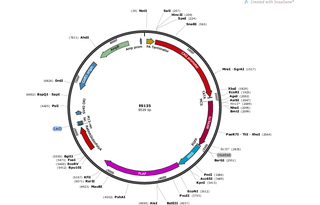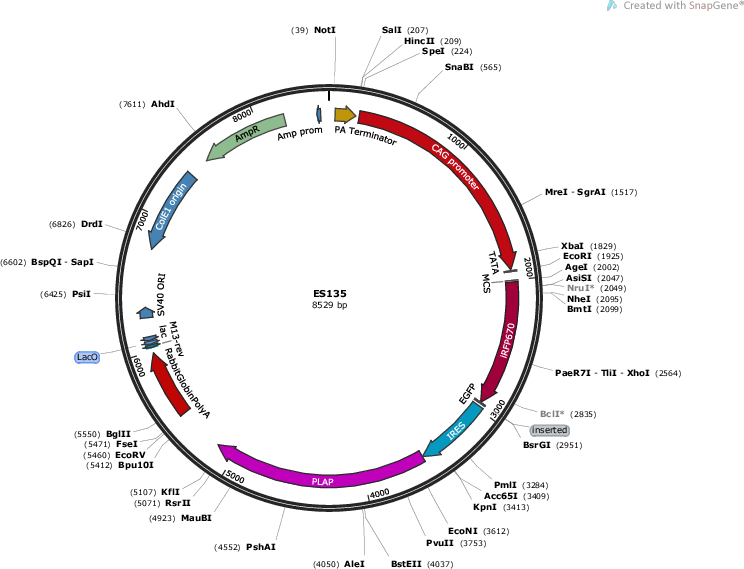CAG-iRFP
(Plasmid
#140460)
-
PurposeEncodes iRFP driven by the CAG promoter
-
Depositing Lab
-
Sequence Information
Ordering
| Item | Catalog # | Description | Quantity | Price (USD) | |
|---|---|---|---|---|---|
| Plasmid | 140460 | Standard format: Plasmid sent in bacteria as agar stab | 1 | $89 | |
Backbone
-
Vector backboneStagia3
- Backbone size w/o insert (bp) 6602
- Total vector size (bp) 8529
-
Vector typeMammalian Expression ; Chicken Expression
Growth in Bacteria
-
Bacterial Resistance(s)Ampicillin, 100 μg/mL
-
Growth Temperature37°C
-
Growth Strain(s)DH5alpha
-
Copy numberUnknown
Gene/Insert 1
-
Gene/Insert nameCAG promoter
-
Insert Size (bp)1701
Cloning Information for Gene/Insert 1
- Cloning method Restriction Enzyme
- 5′ cloning site SalI (not destroyed)
- 3′ cloning site EcorI (not destroyed)
- 5′ sequencing primer GTTCCGCGCACATTTCCCCG
- (Common Sequencing Primers)
Gene/Insert 2
-
Gene/Insert nameiRFP670
-
Insert Size (bp)936
Cloning Information for Gene/Insert 2
- Cloning method Restriction Enzyme
- 5′ cloning site AgeI (not destroyed)
- 3′ cloning site BsrgI (not destroyed)
- 5′ sequencing primer CTGCTAACCATGTTCATGCC
- (Common Sequencing Primers)
Resource Information
-
A portion of this plasmid was derived from a plasmid made byCAG from Addgene plasmid #14757 ; iRFP670 from Addgene plasmid #45457
Terms and Licenses
-
Academic/Nonprofit Terms
-
Industry Terms
- Not Available to Industry
Trademarks:
- Zeocin® is an InvivoGen trademark.
Depositor Comments
The depositor notes that this plasmid contains a ~20bp deletion near the start of the IRES sequence, which may impact IRES function, but was not of concern for this particular study.
These plasmids were created by your colleagues. Please acknowledge the Principal Investigator, cite the article in which the plasmids were described, and include Addgene in the Materials and Methods of your future publications.
-
For your Materials & Methods section:
CAG-iRFP was a gift from Mark Emerson (Addgene plasmid # 140460 ; http://n2t.net/addgene:140460 ; RRID:Addgene_140460) -
For your References section:
Fate-restricted retinal progenitor cells adopt a molecular profile and spatial position distinct from multipotent progenitor cells. Buenaventura DF, Ghinia-Tegla MG, Emerson MM. Dev Biol. 2018 Nov 1;443(1):35-49. doi: 10.1016/j.ydbio.2018.06.023. Epub 2018 Aug 24. 10.1016/j.ydbio.2018.06.023 PubMed 30145104







